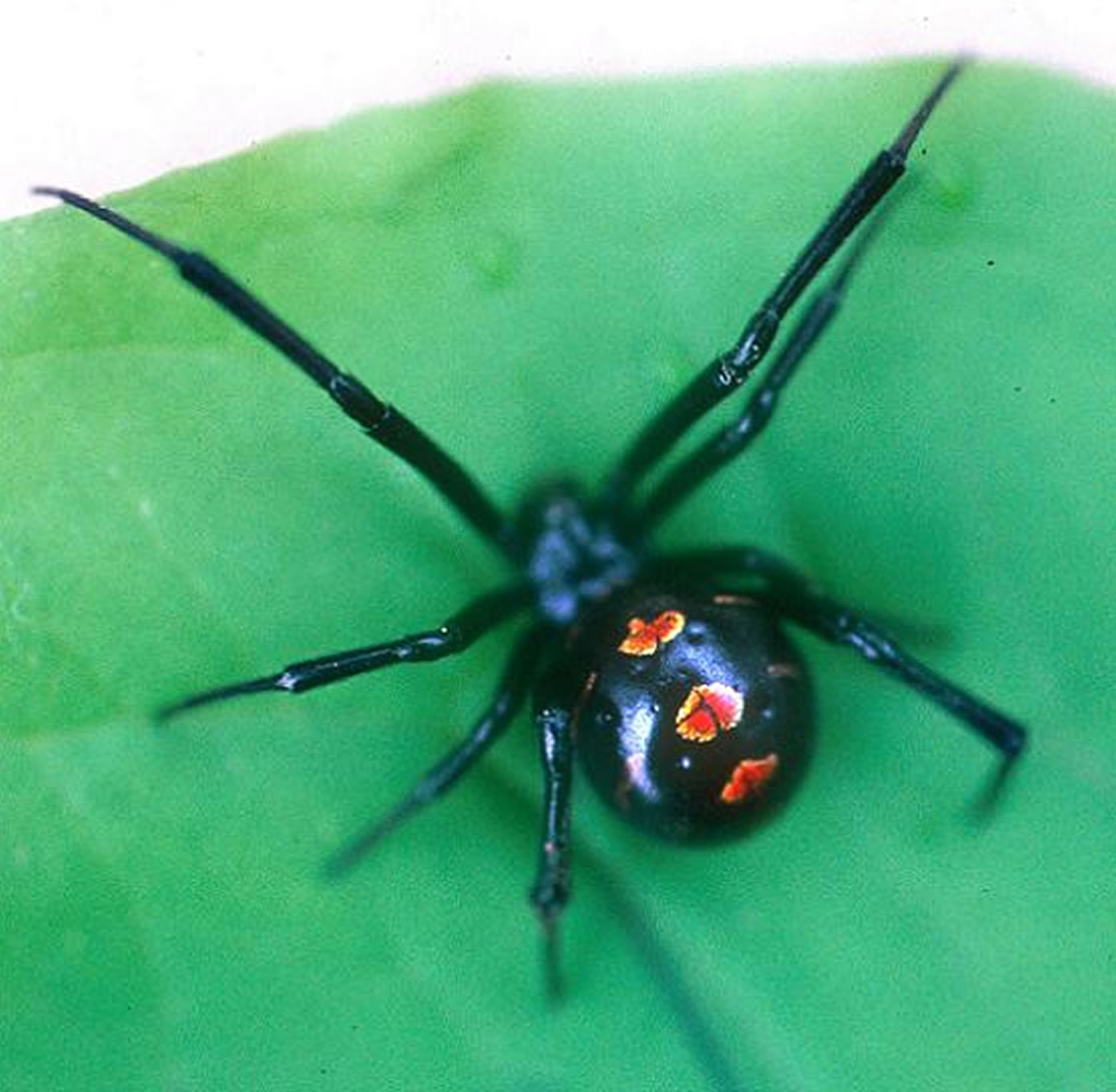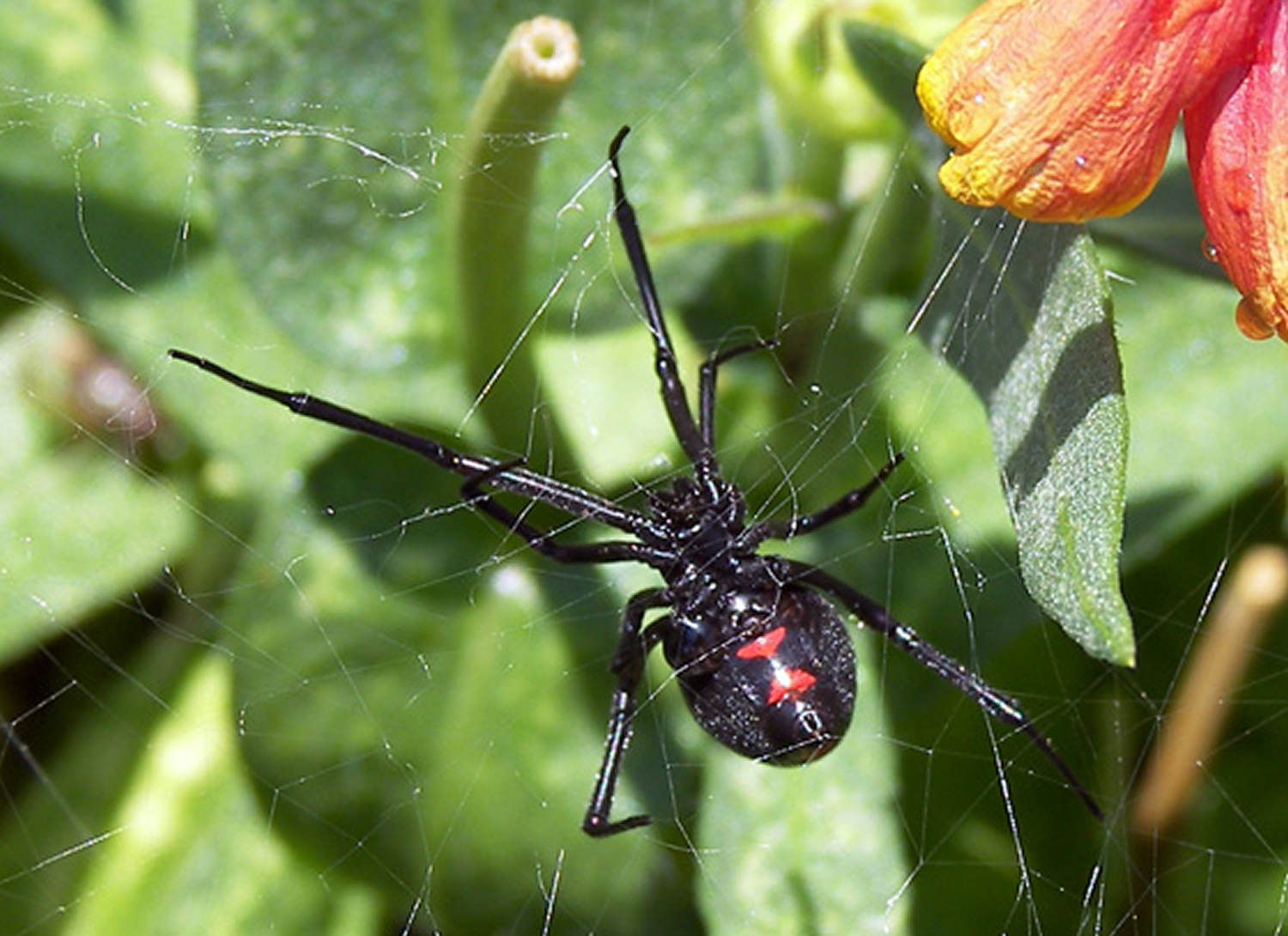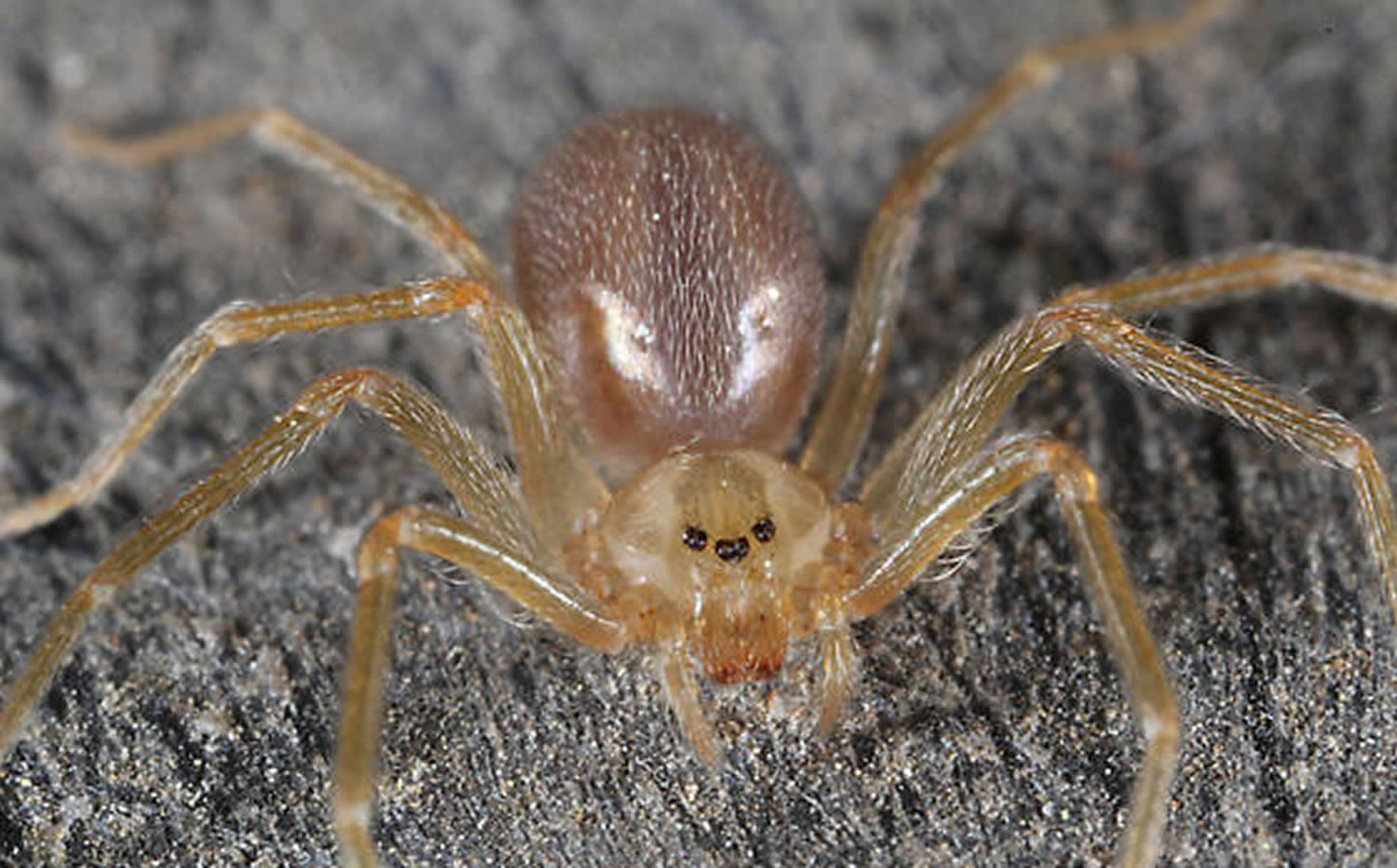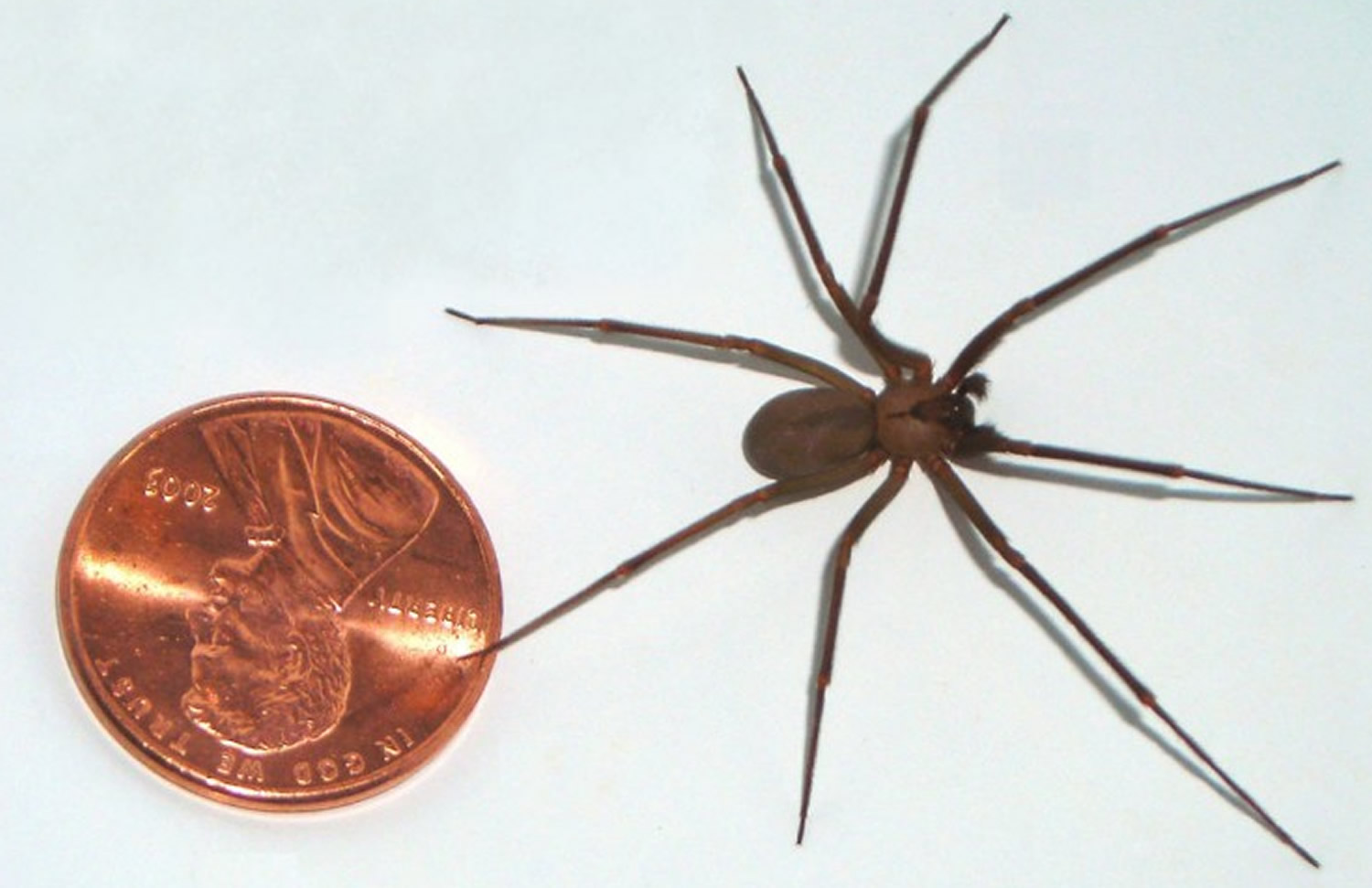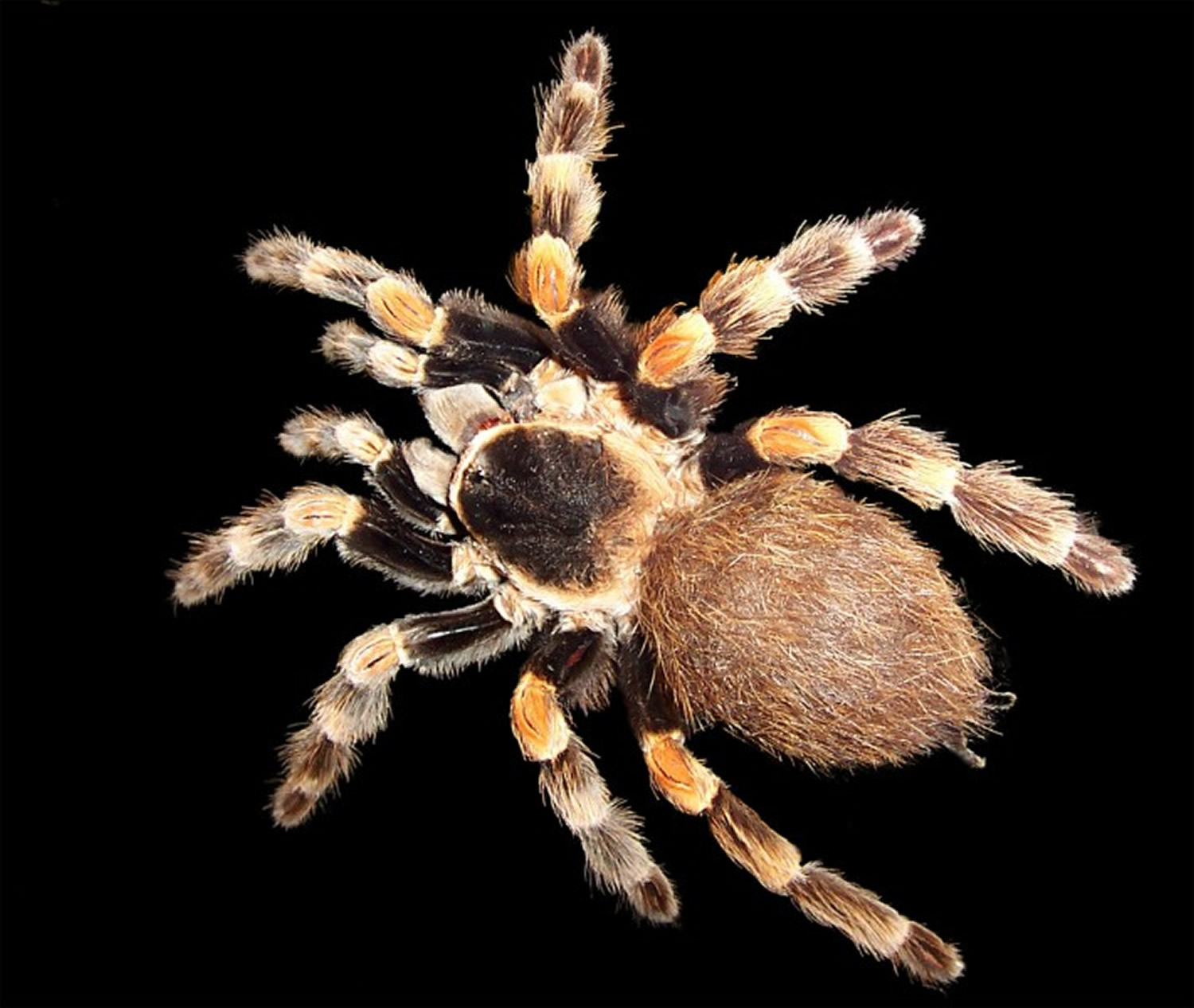Contents
Spider bites
It can be difficult to know if a bite from a spider is dangerous or not. However, most spider bites are harmless. Occasionally, spider bites can cause allergic reactions. And it’s important to be aware that bites from spiders can cause a severe allergic reaction (anaphylaxis) in some people.
Many bites attributed to spiders turn out to have been inflicted by other bugs e.g. fleas, ants, mosquitoes. Skin infections also have been mistaken for spider bites.
There are roughly 30,000 species of spiders and only a few species of spiders have fangs that are strong enough to penetrate human skin. In the United States, venom from species of the brown recluse spider (Loxosceles) and black widow spider (Latrodectus) produce well-known toxic effects.
Spider bites by the venomous black widow (Figure 1) and brown recluse spiders (Figure 2) can be very dangerous to people.
Poisonous spider bites
Black widow spider
The coloration of the Latrodectus species widow spider can vary by species (brown, black, red), but all females (of the species found in the United States and Canada) are shiny black, brown-black, or red with possibly a row of red spots on the top of the abdomen along the midline. Two reddish triangles resembling an hourglass are present on the underside of the abdomen of all species except the Red Widow (Latrodectus bishopi). Females are sedentary, staying on or near their web. Adult females will bite if disturbed. Adult males are harmless.
Black widow female spiders are significantly larger than males (1/2-inch long, not including the legs, about 1-1/2 inches when legs are spread) and unlike males, are able to envenomate. The venom contains a neurotoxin that causes paralysis. Black widow spiders spin large, tangled webs and typically hide close to the ground, under debris or woodpiles, or in front of burrows. Black widow female spiders wait for prey (flies, beetles, etc) to become entangled in their web and quickly paralyze them with their bite.
The Black widow female spider bite – The bite itself often feels like a pinprick. Within in minutes, severe pain and cramping occurs and may spread through other parts of your body. There may be redness and swelling where the bite occurred. Systemic symptoms – those that affect the whole body, not just the site of the bite – are worst 1 to 8 hours after the bite and may last for a few days. Characteristically, these symptoms include muscle cramping, nausea, vomiting, and severe abdominal pain that may be mistaken for appendicitis. Death has been reported in less than 1 percent of cases.
Fortunately, the majority of Black widow female spider bite cases involve only localized symptoms – those that affect only the body part bitten. Treatment is, therefore, mainly supportive (providing comfort and symptom relief) and usually does not require hospitalization. If, however, you experience muscle pain, sweating, nausea, vomiting, or a headache, go to your nearest emergency department as soon as possible. Once there, physicians can give you antivenom and support your airway, breathing, and circulation.
Black widow spider bites
Signs and symptoms of a black widow spider bite may include:
- Pain. Typically beginning within an hour of being bitten, pain generally occurs around the bite mark, but it can spread from the bite site into your abdomen, back or chest.
- Cramping. Abdominal cramping or rigidity can be so severe that it’s sometimes mistaken for appendicitis or a ruptured appendix.
- Sweating. Excessive sweating can occur.
Black widow identification
Some clues for identifying black widow spiders include:
- Shiny black body
- Large round abdomen
- Red hourglass on underside of abdominal area
- Central body about a half-inch (12 to 13 millimeters) long
- Entire body, including legs, can be more than an inch (2.5 centimeters) across
Figure 1. Black widow spider (Black Widow – Latrodectus mactans)
Brown recluse spider
Brown recluse spider also known as Loxosceles reclusa (Figure 2), is also often referred to as the violin or fiddleback spider because of the violin-shaped marking on its thorax. It is found throughout the Southeastern and Midwestern US. Although its natural habitat is outdoors under dry overhanging rocks or trees, it can also crawl indoors and live in protected spaces (think closet, attic, or basement). While it is usually timid, the brown recluse will bite if threatened or trapped. It hibernates during the winter, so most bites occur between March and October. Its venom contains various proteins that cause the skin to breakdown.
The bite of brown recluse spider is usually painless initially, it may take 6 to 12 hours for you to even start noticing the effects of a brown recluse spider bite, which typically begin with pain, severe swelling, and large blisters at the site of attack. Reactions may range from mild hives to full-blown skin death. Few envenomations lead to such severe skin death, which usually occurs 2 to 3 days after the bite. Victims should look out for the typical “red, white, and blue” sign of a brown recluse bite: the center of the bite is gray to purple with a surrounding ring of blanched, white skin that is itself surrounded by a large area of redness. If you see this sign you will most likely feel pain due to skin death. Healing occurs slowly; a review of cases showed that wounds with over 1 cm of skin death required an average of 74 days to heal.
Treatment for brown recluse spider is controversial, as no intervention has been proven to change the natural course of a brown recluse spider bite. Rest, ice, and elevation help reduce redness and swelling. Cool compresses may reduce the venom’s effectiveness, decreasing the amount of skin death. If you develop an open sore, clean it daily and consider applying a topical antibiotic to prevent infection. Because treatment depends on the severity of your injury, see your doctor if you suspect you have been bitten by this spider.
Brown recluse spider bite
The pain associated with a brown recluse spider bite typically increases during the first eight hours after the bite. You may also have fever, chills and body aches. The bite usually heals on its own in about a week. In a minority of cases, the skin at the center of the bite can become dark blue or purple and then evolve into a deep open sore (ulcer) that enlarges as the surrounding skin dies. The ulcer usually stops growing within 10 days after the bite, but full healing can take months.
Brown recluse identification
Some clues for identifying brown recluse spiders include:
- Color ranges from yellowish tan to dark brown
- Dark violin shape on top of the leg attachment segment
- Six eyes — a pair in front and a pair on both sides — rather than the usual spider pattern of eight eyes in two rows of four
- Central body is a quarter-inch to three-quarters of an inch (6 to 19 mm) long
Figure 2. Brown Recluse spider (Loxosceles reclusa – juvenile)
Non poisonous spider bites
Tarantulas
There are over 50 species of tarantulas native to the southwestern and central portions of the United States, including several undescribed species (unknown to science). They can be found in all or parts of (going in a circle): California, Arizona, New Mexico, Texas, Louisiana, Arkansas, Missouri, Kansas, Oklahoma, Colorado, Utah, and Nevada. Their eastern border is the Mississippi River and further to the north, the Missouri River. There is an introduced population of Brachypelma vagans in central Florida, but this species is indigenous to southern Mexico and Belize.
Tarantulas are among the largest spiders in the world, measuring up to 8 cm in length. Females can live up to 35 years, while males generally live for 5 to 7 years. They are found mainly in the tropical and subtropical climates of the southwestern US. Despite their panic-inducing appearance, tarantulas are nonaggressive and usually hide as their main line of defense.
The bite – Unlike other spiders, tarantulas rarely bite unless provoked – their venom is no worse than most bee stings. When cornered or threatened, Tarantulas use their hind legs to flick needle-like hairs off their belly. These hairs embed in your skin, causing a hive-like reaction with itching, swelling and redness. Your eyes may also become irritated and sometimes require medical treatment. The risk of severe reactions is greater outside the US, where tarantulas with different hair types are found.
Figure 3. Tarantula spider
Seek prompt medical care in the following situations:
- You are unsure whether the bite was from a poisonous spider.
- The person who was bitten experiences severe pain, abdominal cramping or a growing ulcer at the bite site.
- The person who was bitten is having problems breathing.
Your doctor may recommend a tetanus booster shot if you haven’t had one in the last five years.
Spider bites complications
Very rarely, a bite from a black widow or brown recluse spider may be deadly, particularly in children.
Anaphylactic shock
Spider bites can be painful. Occasionally some people have a severe allergic reaction to being bitten or stung.
In cases of severe allergic reaction, the whole body can react within minutes to the bite or sting which can lead to anaphylactic shock. Anaphylactic shock is very serious and can be fatal.
Symptoms of anaphylactic shock may include:
- swelling of the mouth, throat or tongue
- difficulty swallowing
- difficulty breathing or shortness of breath or wheezing
- difficulty talking
- a rash that may appear anywhere on the body
- itching – usually around your eyes, ears, lips, throat or roof of the mouth
- flushing (feeling hot and red)
- stomach cramps, feeling or being sick
- feeling weak
- collapsing or falling unconscious.
Call your local emergency number for an ambulance. If the person has a ‘personal action plan’ to manage a known severe allergy, they may need assistance to follow their plan. This may include administering adrenaline to the person via an autoinjector (such as an Epipen®) if one is available.
Types of spider bites
Severe spider bite symptoms occur as a result of injected spider venom. The severity of symptoms depends on the type of spider, the amount of venom injected and how sensitive your body is to the venom.
Risk factors for spider bites
Although dangerous spider bites are rare, your risk of being bitten increases if you live in the same areas that the spiders do and you happen to disturb their habitat. Both black widow and brown recluse spiders prefer warm climates and dark, dry places.
Black widow spider habitat
Black widow spiders can be found throughout the U.S. but more so in the southwestern states. They prefer to live in:
- Sheds
- Garages
- Unused pots and gardening equipment
- Woodpiles
Brown recluse spider habitat
Brown recluse spiders are found most commonly in the southern Midwest and in limited areas of the South. Recluses are so named because they like to hide away in undisturbed areas. They mostly prefer to live indoors, in places such as:
- The clutter of basements or attics
- Behind bookshelves and dressers
- In rarely used cupboards
Outside, they seek out dark, quiet spots, such as under rocks or in tree stumps.
Spider bites prevention
Spiders in general, including the black widow and brown recluse, bite only in defense, when being trapped between your skin and another object.
To prevent spider bites:
- Learn what dangerous spiders look like and their preferred habitat.
- Wear a long-sleeve shirt, hat, long pants tucked into socks, gloves and boots when handling stored boxes or firewood, and when cleaning out sheds, garages, basements, attics and crawl spaces.
- Inspect and shake out gardening gloves, boots and clothing that have been unused for a while.
- Use insect repellents, such as DEET or Picaridin, on clothing and footwear.
- Keep insects and spiders out of the house by installing tightfitting screens on windows and doors, sealing cracks where spiders can come in and using safe indoor insecticides.
- Remove piles of rocks or lumber from the area around your house and avoid storing firewood against the house.
- Make sure beds aren’t pushed against the wall and that only the legs of the bed touch the floor. Don’t store items under the bed and don’t let bedding drag on the floor.
- Vacuum spiders and spiderwebs and dispose of them in a sealed bag outside to prevent re-entry into the house.
What do spider bites look like?
Typically, a spider bite looks like any other bug bite — a red, inflamed, sometimes itchy or painful bump on your skin — and may even go unnoticed. Harmless spider bites usually don’t produce any other symptoms.
Spider bites diagnosis
Your doctor may suspect a spider bite based on your history and your signs and symptoms, but a specific diagnosis is difficult to confirm. Confirmation requires:
- An eyewitness to the bite
- Identification of the spider by an expert
- Exclusion of other possible causes.
Home remedies for spider bites
If you are bitten by a spider, you may see a reaction similar to that of a bee sting, including redness, pain and swelling at the site.
Your doctor may also recommend a tetanus booster shot if you haven’t had one in the last five years. You may need antibiotics if the bite becomes infected.
For most people with spider bites, including black widow and brown recluse spider bites, the following treatment measures are all that’s required.
To treat a spider bite:
- Wash the area well with soap and water. Apply an antibiotic ointment if you think the bite was caused by a brown recluse spider.
- Apply an ice pack or a wet compress to the area. This helps reduce pain and swelling.
- Take over-the-counter pain medicine, if needed. You might try a pain reliever, such as acetaminophen (Tylenol, others) or ibuprofen (Advil, Motrin IB, others)
- Consider using antihistamines for severe swelling. Antihistamine (Benadryl, Chlor-Trimeton, others).
- Observe the bite for signs of infection.
- Seek medical treatment for small children and adults with severe symptoms
Black widow antivenom
If a black widow bite is causing severe pain or life-threatening symptoms, your doctor may recommend an antivenom, which may be injected into a thigh muscle or given through a vein (intravenously). Antivenom can cause serious allergic reactions, so it must be used with caution.
